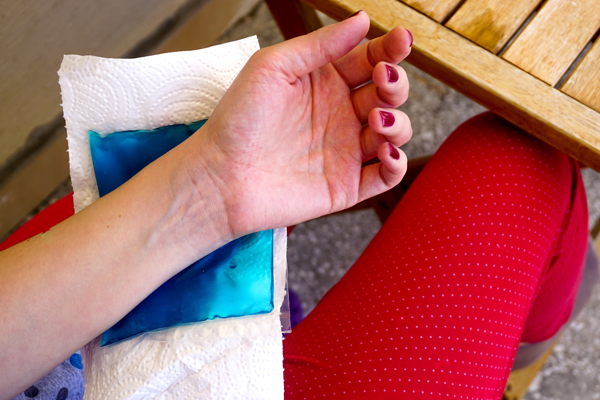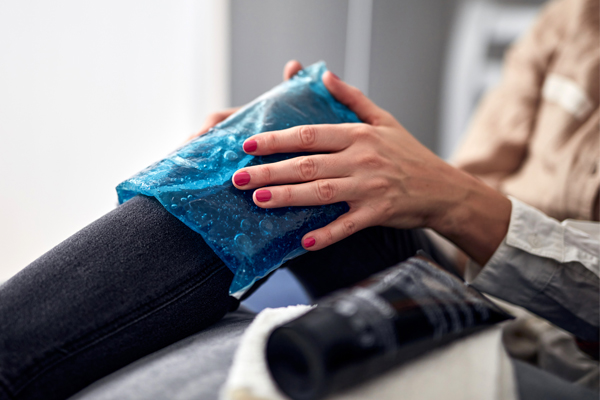At WBOC we’re often asked this question so here’s some information to help you.
Firstly, it helps to understand why hot/cold may help you. It’s all to do with circulation. Good circulation is important for good health and for allowing your body to recover and repair. Blood travels around your body in a one-way system which can often become congested through inactivity or following an injury. It’s possible to make the system work better by using changes in temperature either to flush blood through an area or to drain congested tissues. This will speed up recovery and can help to reduce pain.
It’s useful to understand why these changes in temperature work.
Heat
This will help tight muscles to relax and can also help to reduce pain. It makes inflammation worse though, so it shouldn’t be used if there’s recent inflammation in the area.
When muscles tighten protectively, they can compress the veins and restrict local blood-flow. Eventually the blood-flow becomes compromised enough to reduce oxygen levels in the tissues and that’s what can cause pain. Using heat can encourage the muscles to relax and increases the flow of fresh oxygenated blood through the area.
Cold
Cold doesn’t ease tight muscles but it will damp down the effects of inflammation and can also help to reduce pain.
Inflammation is your body’s initial healing response. This is a good thing but sometimes the response can be excessive, filling the area with fluid and causing pressure on other tissues. Cold makes the tissues tighten and slows down the inflammatory process. It’s most useful in the first 24 hours following an injury. After 24 hours it’s best to use hot and cold alternately.
Alternate Hot and Cold
This has the effect of draining products of inflammation out of the tissues and pumping fresh blood into the area. It promotes healing.
When tissues are painful the muscles around them tend to tighten up to hold everything still and stop any movement. These tight muscles compress the veins and can reduce blood flow through the area. This allows inflammation to build up and slows down the healing process.
When you put heat on the area, blood rushes towards the skin and the tissues loosen. Applying cold encourages the blood to rush away from the skin and the tissues to tighten. By using heat and cold alternately you’re using a body reflex to ‘wring out’ the tissues much like squeezing out a soapy sponge. With cold, you’re effectively squeezing the sponge out. Using heat is like putting the squeezed sponge back into a bucket of fresh water. You’ll need to do this a few times on each application to rinse all the inflammatory products out of the tissues.
You can use this method to reduce inflammation and to promote healing after the first 24 hours.
What, when and how
Now all you need to know is what to use, when and how to use it.
For heat you could use a hot-water bottle or a microwaved wheat/gel pack.
If you’re heating in a microwave aim for pleasant warmth, not hot enough to burn.
Apply heat to painful muscles for as long as you like.
For cold try a bag of ice cubes, packet of frozen peas or frozen gel pack.
Anything from the freezer should be wrapped in a cloth or placed over clothes to prevent an ice-burn.
Apply in the first 24 hours after injury for 5-10 minutes every hour.
Alternate hot and cold (sometimes called contrast bathing).
Apply in the inflamed area after the first 24 hours from injury.
Start with cold for 2 minutes
Then hot for 1 minute.
Keep swapping them over for 10-15 minutes.
Always end with cold.
Don’t repeat the alternating pattern for more than 15 minutes. By then your tissues will have gained the benefit. You need to leave it for the rest of the hour before doing it again. You can do this every hour if you wish, but at least twice a day morning and evening for as long as inflammation persists.
If you’re unsure what to use, please ask at your appointment or contact the practice for advice.


